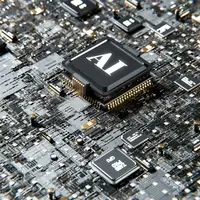
Walk into any Fortune 500 headquarters today and you'll witness something that would have mystified business leaders a decade ago. Decisions are being made—real, consequential, million-dollar decisions—without a single human in the loop. Not by accident. By design.
This isn't automation as we've known it. It's something entirely different.
The Great Misconception: Why Most People Still Don't Get It
Ask ten executives what AI does, and nine will describe sophisticated pattern recognition. Advanced analytics. Really smart spreadsheets that can talk back. They're wrong—catastrophically so.
True agentic AI doesn't wait for instructions. Period. It observes, analyzes, decides, acts. While traditional AI systems function like extremely capable interns—brilliant at specific tasks but requiring constant supervision—agentic systems operate more like seasoned department heads who understand the business, anticipate problems, and solve them independently.
Here's what that looks like in practice: Your conventional AI might flag unusual spending patterns and generate a report. An agentic system? It identifies the anomaly, cross-references vendor contracts, compares pricing across suppliers, initiates procurement discussions, and presents three fully-vetted alternatives—all before your morning coffee gets cold.
The technological underpinnings finally caught up with the vision. GPT-4's reasoning capabilities. Claude's contextual awareness. Multi-agent frameworks that enable AI systems to collaborate like seasoned teams. But the real breakthrough? Economic viability. What cost millions three years ago now runs on enterprise budgets.
The Symphony Approach: Why Isolated AI is Dead
Single-agent deployments are already obsolete, though most companies haven't realized it yet. The future belongs to orchestrated AI ecosystems where specialized agents communicate, coordinate, and collectively solve complex business challenges.
Picture this unfolding in real-time at a major manufacturer: Temperature sensors detect anomalous heat signatures in Production Line 7. Within seconds, the maintenance agent correlates this data with historical failure patterns, determining a 73% probability of bearing failure within 48 hours. It immediately alerts the procurement agent, which checks inventory levels for replacement components—none available. The procurement agent queries three suppliers simultaneously, negotiating delivery terms while the production agent reschedules workflows to minimise disruption. The financial agent pre-approves expedited shipping costs and updates budget forecasts. The communication agent drafts stakeholder notifications across departments.
Total elapsed time: four minutes and seventeen seconds.
Siemens has perfected this orchestration across thousands of industrial facilities. Their interconnected agent network predicts equipment failures with remarkable precision—94% accuracy rates that translate to $50 million in prevented downtime annually. More impressive than the savings? The speed. Critical maintenance decisions that once required executive committee approval now happen autonomously, often preventing failures before human managers even realize problems exist.
Financial services showcase equally dramatic implementations. JPMorgan's LOXM isn't just executing trades—it's conducting market research, analyzing geopolitical developments, adjusting risk parameters, and coordinating with compliance systems to ensure regulatory adherence. The system processes trading volumes that would require hundreds of human analysts, making split-second decisions across global markets while continuously refining its strategies based on outcomes.
Industry-Specific Intelligence: The End of One-Size-Fits-All Solutions
Generic AI solutions consistently underperform because they lack contextual sophistication. Modern agentic systems are purpose-built for specific industries, incorporating decades of domain knowledge into their decision-making processes.
Healthcare implementations reveal this specialisation dramatically. Instead of simple appointment scheduling, medical AI agents now analyze patient histories, identify potential drug interactions, coordinate care between specialists, and even predict which patients would benefit from preventive interventions. One major hospital system reports that their agents identify at-risk patients 60% faster than human staff, leading to earlier interventions and significantly improved outcomes.
Legal applications have evolved beyond document review. Modern legal agents research case precedents, draft contracts tailored to specific jurisdictions, monitor regulatory changes, and maintain compliance across multiple legal frameworks simultaneously. A multinational corporation reports that their legal AI agent handles 70% of routine contract negotiations without human intervention, reducing average deal closure times from weeks to days.
Retail transformations might be the most visible to consumers. Behind-the-scenes agents now manage entire supply chains, adjusting inventory based on weather patterns, social media sentiment, economic indicators, and even geopolitical developments. They negotiate with suppliers, optimize shipping routes, coordinate marketing campaigns, and adjust pricing strategies—all while maintaining profitability targets that would challenge human management teams.
The Measurement Revolution: Numbers That Redefine Success
Early adopters aren't just reporting improvements—they're documenting fundamental operational transformations. Customer service platforms like Salesforce and ServiceNow show 50% faster resolution times, but that statistic understates the real impact. These systems are handling increasingly complex issues that previously required human intervention, effectively expanding their scope while improving performance.
DHL's logistics optimisation reveals the compounding effects of agentic intelligence. Their routing agents don't just find faster delivery paths—they consider traffic patterns, weather forecasts, package priorities, fuel costs, and driver schedules simultaneously. The result? 15% reduction in delivery times and 23% improvement in fuel efficiency. Multiply those gains across millions of packages annually, and you're looking at operational advantages that competitors simply cannot match through human planning alone.
But ROI calculations tell the most compelling story. Organisations implementing comprehensive agentic strategies report efficiency improvements between 25-40%—figures that represent fundamental shifts in operational capacity rather than incremental gains. Cost reductions average 20-30%, but the quality improvements often prove more valuable than the savings.
Software development showcases perhaps the most dramatic productivity gains. Code-refactoring agents accelerate legacy system updates by 60%, while deployment agents reduce pipeline times from hours to minutes. One Fortune 500 technology company documented development cycle reductions of 40% after implementing comprehensive agentic systems—improvements that translate directly to competitive advantage in fast-moving markets.
The Reality Check: Why Half of All Projects Will Fail
Industry enthusiasm hasn't blinded analysts to fundamental challenges. Gartner's prediction that 40% of agentic AI initiatives will be abandoned by 2027 reflects harsh realities that many organisations are discovering too late.
"Agent-washing" has become epidemic—companies rebranding conventional automation as agentic AI to capitalise on market excitement. These superficial implementations deliver disappointing results because they lack the autonomous decision-making capabilities that define true agentic systems. Organisations often underestimate the infrastructure investments, data quality requirements, and cultural transformations necessary for success.
Security implications present even more serious challenges. Agentic systems with memory capabilities and tool access create attack vectors that traditional cybersecurity frameworks weren't designed to address. Recent academic research has identified vulnerabilities in cognitive architectures that could enable lateral movement attacks, allowing malicious actors to manipulate AI decision-making processes or access sensitive systems through compromised agents.
The data integration challenge proves particularly vexing. Many organisations discover that their information systems are too fragmented and their data quality too poor to support effective agentic operations. Success requires unified data platforms, robust API architectures, and contextual tool protocols—investments that often exceed initial project budgets by substantial margins.
Cultural resistance shouldn't be underestimated either. Employees accustomed to controlling every decision struggle to trust autonomous systems, leading to micromanagement that defeats the purpose of agentic deployment. Successful implementations require comprehensive change management programs that address psychological barriers to human-AI collaboration.
Leadership Metamorphosis: From Commanders to Conductors
The rise of agentic AI demands fundamental leadership evolution. Traditional management models—built around directing human teams toward specific objectives—prove inadequate for hybrid ecosystems where AI agents operate alongside human colleagues.
Tomorrow's leaders must become orchestrators rather than directors. They need skills that business schools haven't yet begun teaching: how to coach AI systems, how to establish ethical boundaries for autonomous decision-making, how to design workflows that optimize human-AI collaboration, and how to measure performance in hybrid environments.
Key performance indicators are evolving rapidly. Alongside traditional financial metrics, leaders now track AI ROI, ethical compliance scores, decision quality ratings, and time-to-scale measurements. Many organisations are creating entirely new executive positions—Chief AI Officers, AI governance councils, and hybrid team managers—to address complexities that didn't exist five years ago.
The most successful leaders are those who embrace the paradox of autonomous systems requiring careful human oversight. They establish clear boundaries for AI decision-making while allowing sufficient autonomy for agents to demonstrate their capabilities. They build trust through transparency rather than control through restriction.
Implementation Strategies: Lessons from the Front Lines
Successful agentic AI adoption follows surprisingly consistent patterns across industries and organisation sizes. The most effective approaches begin with carefully scoped pilots targeting high-volume, repetitive processes where the consequences of errors are manageable and the benefits are easily measurable.
Customer service ticketing provides an ideal starting point. These systems can demonstrate immediate value while organisations learn to work with autonomous agents. Inventory management offers another excellent pilot opportunity—agents can optimise stock levels and reorder processes while human managers maintain oversight of strategic decisions.
Scaling to multi-agent systems requires substantial infrastructure investments that many organisations underestimate. APIs must enable seamless communication between agents. Data platforms must provide consistent, real-time information access. Governance frameworks must ensure accountability and auditability. These technical requirements often demand significant architecture changes that can take months to implement properly.
Governance cannot be retrofitted—it must be built into agentic systems from the beginning. Organisations need audit trails that track every decision and action. They need ethical monitoring systems that flag potential problems before they escalate. Most critically, they need rollback capabilities that allow human managers to reverse AI decisions when circumstances require intervention.
Workforce preparation deserves equal attention to technical implementation. Cross-functional workshops help employees understand how they'll collaborate with AI colleagues. Change management programs address the psychological aspects of human-AI teamwork. Technical training ensures that human supervisors can effectively guide and oversee agentic systems without micromanaging them.
Future Trajectories: The Inevitable Transformation
Industry projections paint a picture of comprehensive transformation that will reshape business operations within the current decade. By 2028, analysts predict that 15% of routine business decisions will be made autonomously by AI agents—a figure that represents millions of decisions across major enterprises.
Perhaps more significantly, 33% of enterprise software will incorporate agentic components by the end of the decade, up from less than 5% today. This isn't just feature enhancement—it represents a fundamental shift in how software serves business needs.
The implications extend beyond operational efficiency. Organisations that successfully implement agentic systems will operate with responsiveness and precision that creates sustainable competitive advantages. They'll identify opportunities faster, respond to problems more quickly, and optimise resources more effectively than competitors relying on traditional human-managed processes.
But the transformation demands more than technology adoption. It requires reimagining business processes, redefining leadership roles, and rebuilding organizational cultures around human-AI collaboration principles that most companies are only beginning to understand.
The Inescapable Conclusion: Adapt or Become Irrelevant
Agentic AI has crossed the threshold from emerging technology to business imperative. The question facing organisational leaders isn't whether to implement these systems, but how quickly they can do so effectively without compromising operational stability.
The transformation extends far beyond technical capabilities. It demands new approaches to management, fresh thinking about decision-making authority, and cultural adaptations that many organisations will find challenging. Companies that successfully navigate this transition will establish operational advantages that competitors cannot easily replicate.
Those that launch thoughtful pilots, invest in governance-first infrastructures, and prepare their leadership teams for hybrid ecosystem management will thrive in the emerging landscape. Organisations that hesitate—or worse, pursue superficial implementations that fail to deliver autonomous capabilities—risk finding themselves at permanent disadvantages in markets where speed and precision determine success.
The autonomous enterprise isn't a futuristic concept—it's an immediate reality reshaping competitive dynamics across every industry. The critical question for every organisation is whether they'll lead this transformation or be disrupted by competitors who embrace it more effectively.
Success belongs to those who recognise that agentic AI represents ecosystem transformation, not just technological upgrade. The companies that balance innovation with governance, autonomy with accountability, and efficiency with trust will define the next era of business excellence.
The revolution is underway. The only choice left is which side of it your organisation will occupy.














Comments ( 0 )